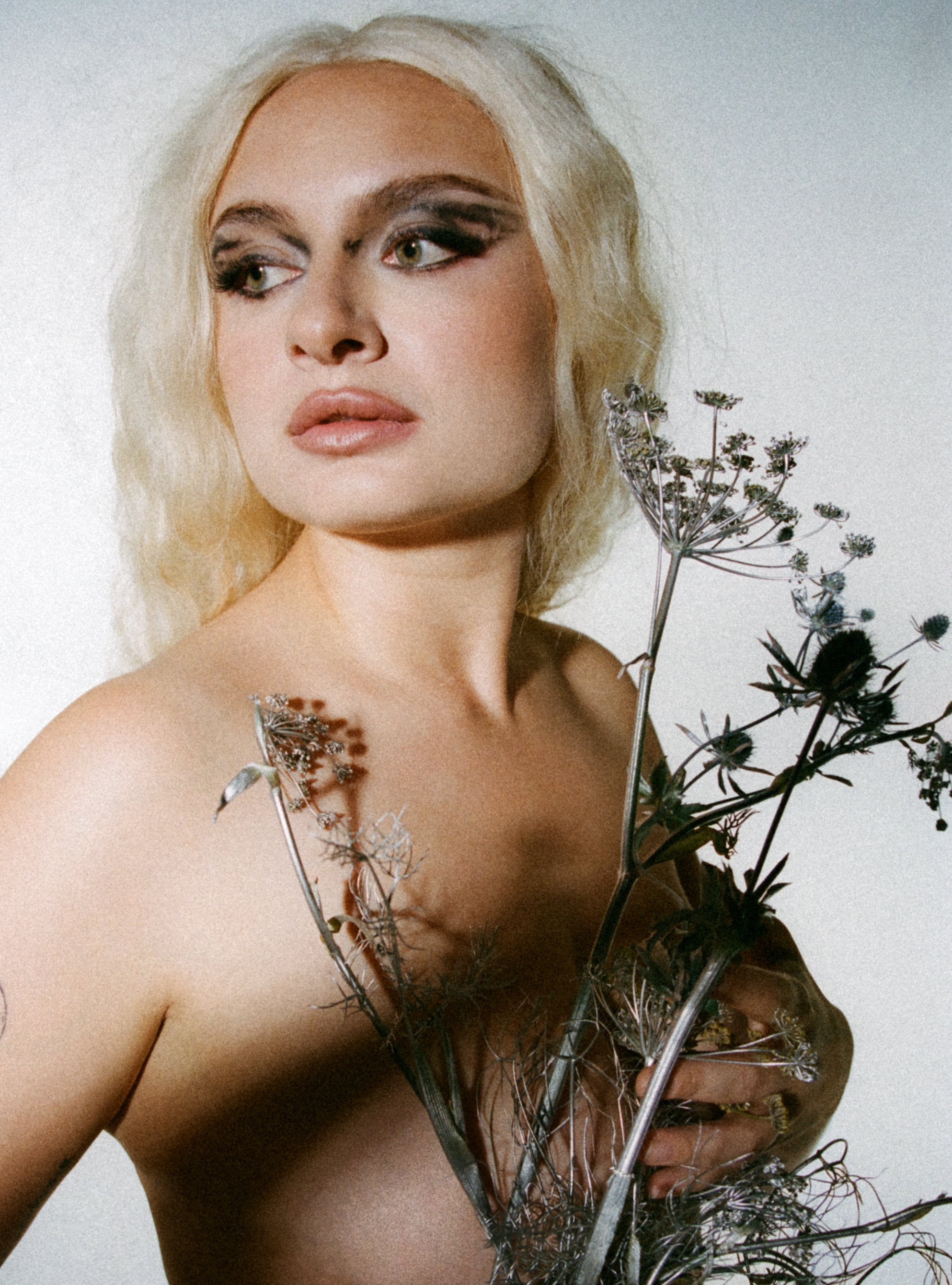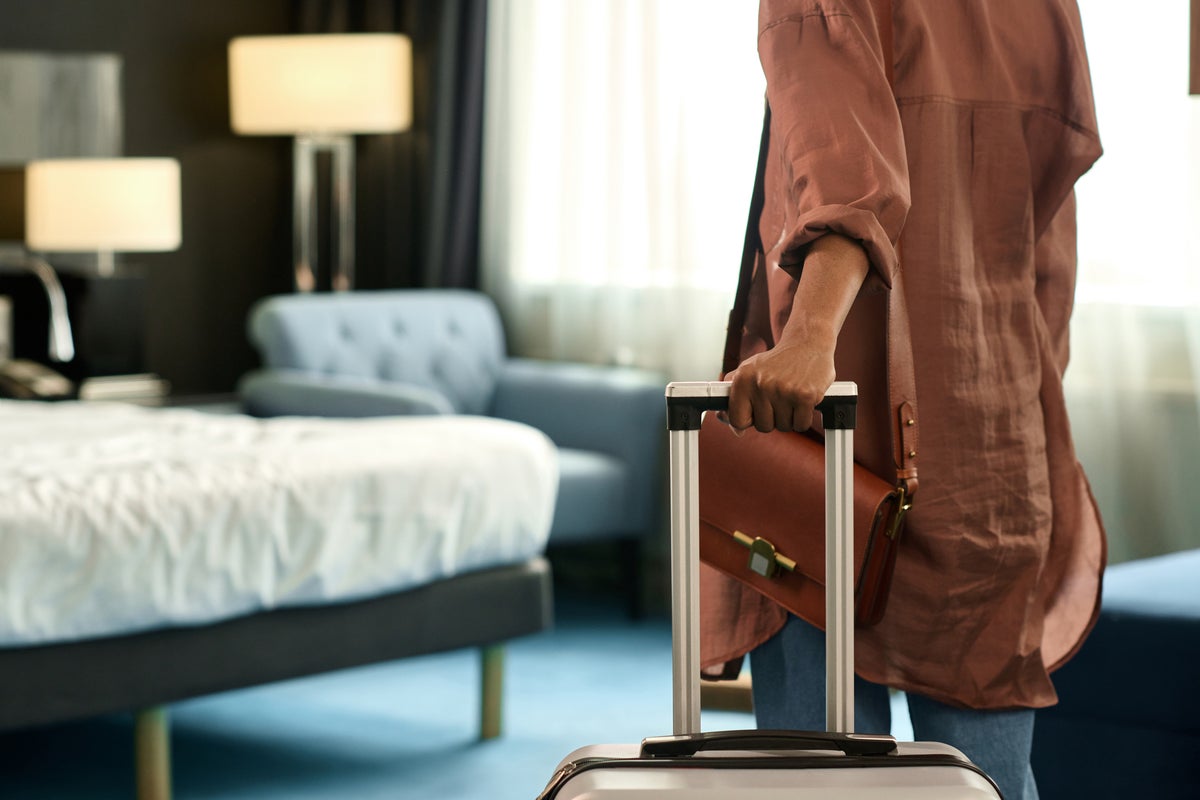ARTICLE AD BOX
Emotionally, it was incredibly fulfilling, albeit culturally odd,” says Låpsley. The singer is talking about the fallout from a love triangle that had her at its centre. It’s an experience she’s zoned in on for her latest record, and it challenged her long-held belief that you “have a finite amount of love for a single person”.
While writing this, her fourth album – and her first as an independent artist – she was grappling with more than just creative pressure. The romantic entanglement involved her now-ex, who also happens to be the album’s co-producer. Across their relationship, Holly Lapsley Fletcher, 29, met someone new, to whom she is now engaged. The album deals with her love for both men – and subsequent decision to break up with one – poetically, and with unflinching honesty.
“There is a self-deprecating side to locking yourself in a room with your ex to finish a record,” she laughs, miming the act of flogging her own back.She produced the album with South African musician Greg Abrahams, which led to them entering into a long-distance relationship that they consciously opened up once they were living in different hemispheres. Låpsley met her now-fiancé at this point – at the time, both men were going through divorces.
We’re having coffee near her Clapton flat, where she lives with her fiancé and a miniature Australian shepherd dog. Dressed in a casual red T-shirt and with slicked-back, cropped blonde hair, she has an infectious grin and conspiratorial energy, interjecting about how the US is “like Gilead” right now and urging me to listen to PM, her favourite Radio 4 programme.
The singer-songwriter is no stranger to working through her emotions in confronting ways. When she was eight years old, her Saturday drama school allowed her to act out her parents’ divorce. “This was a local, state-funded class in Southport, but they asked us big questions,” she recalls. That maturity followed her through school, where she successfully campaigned for a wind turbine. Aged 14, she would sneak out of her house to go to raves in nearby Liverpool, hearing the kind of electronic music that would subtly influence the dubby tilt to her debut EP Monday, leading to her being signed by XL Recordings aged 18.
On its release in 2016, Låpsley’s debut album Long Way Home was a huge success, but the follow-up, 2020’s Through Water, came out just as lockdown hit, which resulted in her getting dropped by her label. She recorded 2023’s Cautionary Tales of Youth in South Africa, where she found herself locked down during the pandemic. It was there in Cape Town that she met Abrahams, someone she describes as “one of the country’s best musicians”, with whom she began a relationship that continued after she returned to her home 6,000 miles away.
From then to concluding her latest album, I’m a Hurricane I’m a Woman In Love, it’s been two years of Låpsley navigating this messy entanglement of three people. Although she shared her feelings openly with both her partners, she started to feel “a growing guilt and assumption that both men would prefer me all to themselves – despite neither saying so explicitly”. She adds: “I went down the rabbit hole in therapy to challenge that patriarchal hangover of why I assumed a man would and should want that with their female partner.”
The eventual decision she came to was made after placing “a lot of pressure on myself to come to conclusions over what I wanted for my future”. She wanted stability and to live in the same country as her partner, but adds that there was an element of “heteronormative society-induced panic” that influenced her choice.
She poured all of this into the record, processing diary entries that pull from weeks and months of anxious thoughts and day-to-day feelings. Stadium drum-filled opener “Hurricane” was written in the throes of her relationship with Abrahams, before she met her fiancé, while the sweetly choral “Lilac Hues” is about the pain of having to make a choice: “I’m at the middle of a drawbridge with ships passing in the night/ I know it’s got to rise, it’s inevitable time.”
On “Featherweight Champion of the World” she sings about telling her fiancé she loved him for the first time, a milestone she describes as “one of the easiest things I’ve ever said”. “North Face”, an “angry requiem” to her and Abrahams’ relationship, is a track she’ll struggle to sing on stage, she thinks. “You can see why so many artists struggle with touring and end up having addictions, because you’re reliving that experience every time you perform it.”

Was it healing to pour all of that into an album? “When you break up with someone, you have all this love and nowhere to put it, and it’s painful,” she says. “In the past I’ve become addicted to walking or exercise, because I’m trying to channel its energy and it has nowhere to land. Instead of getting a mad haircut, I weirdly went through this healing process with that other person.” For her, the studio had a sexual energy that made recording with a former lover even more difficult in a space that was tied to their creative intimacy.
Making the album “did involve, obviously, a huge level of trust from my partner”, she adds, since she and Abrahams had to spend a great deal of time in the studio together, obsessively tweaking drum sounds and harmonies for what she describes as a “very nerdy record”. “It wasn’t easy finishing the album in that newfound platonic space. And I talk about it on the album – there’s a level of vulnerability and openness that is quite sexual, openness without it crossing a physical line.”
The album is a way for Låpsley to challenge typical representations of love. “There’s this assumption that if you love a second person, it takes away from the first,” she says. “But what I realised was it’s like your bucket’s full, and then another bucket arrives.” It led to her rethinking how people view situations like this. “It’s not like this came about from an affair, or anything naughty – from society’s perspective it was odd, but from the lived experience it was quite wholesome. Before this, I was someone that was quite unhealthy in love.”
Låpsley identifies as bisexual, and credits reading queer theory with helping her see life outside binaries. The experience “made me realise some of the rigid expectations I had of myself and others in my head,” she says.
It’s not like this came about from an affair, or anything naughty – from society’s perspective it was odd, but from the lived experience it was quite wholesome
At other times, the record grapples with difficult, humbling emotions. Låpsley takes out her phone, encased in Brat lime green, to play me a clip of a video she’s shot for “Woman Like That”, an Eighties power ballad with a Caroline Polachek lilt, in which she sings about feeling envious of her fiancé’s ex-wife: “I’d kill for a body like that.” The video references Hamlet’s Ophelia, with Låpsley swapping bodies with the imagined “other woman”.
Those “dark sides of jealousy” are something she was keen to explore. “When I speak to my friends about what brings us to the level of nuttiness or takes us to the edge [in relationships], it’s always other women, not men,” she says. “It’s like, do I wanna be her? Am I attracted to her?”
I’m a Hurrican I’m a Woman In Love is the inaugural release on Låpsley’s new label, Her Own Recordings, which has ambitions to sign women and non-binary artists in the future. Making music as an artist today is notoriously difficult, particularly for working-class musicians, and Låpsley mentions that she wouldn’t be able to pay her mortgage without one large commercial sync a few years back (the sort of financial win that’s impossible to predict or control).
She recently re-read Deborah Frances-White’s The Guilty Feminist, and recalls how one of its main points is that “part of equality is money – you need to give money to women and marginalised communities”.
The label was envisioned as a kind of “protest” against the current state of the music industry. Having stepped into the business so young, Låpsley encountered her fair share of “rogue” and “gangster” figures through her time in the notoriously unregulated sector, and remembers male execs praising her for going to the gym.
One fashion-magazine shoot at the start of her career sticks in her mind. Their stylists didn’t have any clothes for her 16-18 size, so stuck her in a big men’s coat. “From that point onwards, they just put me in big coats,” she says. “That told me, as an 18, 19-year-old, that I was meant to be hidden.” She visited Rome recently, and shows me some film snaps she took of all the “statues of women with their tummies out – proper bellies”, she says. “And I’m like, we’ve always had tummies! I took so many pictures of them.”
One way she’s reclaiming that power is by directing her own image, something she felt that she wasn’t allowed to do while signed. For the album artwork, imagery and videos, Låpsley has worked with creative director Jeanne Buchi. Through shaping her image in this way, she says, she finally feels like she has access to the worlds of fashion and art – “but I had to f***ing bang the door down, and lose a bit of weight to do it. That’s a bit dark.”
On the moodboard: woodcut typography, medieval imagery, Joan of Arc, and “Boudica riding into battle with her tits out”. One of the singer’s long-running frustrations is her inability to grow out her bleached hair, so she has taken to wearing long, ice-blonde wigs to represent this mythological, warrior-queen-inspired chapter of her music.
My music is making millions for other artists. Why can’t it pay my rent?
Låpsley has spent the last two years trying to undo the industry’s perception of her. The narrative, as she sees it, is that she’s a girl who entered the industry while taking her A-Levels, and who still sounds like the tracks she made in 2014 on GarageBand. “There’s been no allowance for growth,” she says, adding that she feels this has contributed to a lack of investment in her music. She now mentors young musicians coming up through Liverpool and Merseyside as part of the LIMF Academy.
As much as she wants to encourage new talent, she’s aware of how tough the landscape is for up-and-coming artists. “I’ve had an eating disorder – it’s not a healthy thing to be scrutinised,” she says. “It’s really weird mentoring, [because] it’s something where I’m like, ‘I actually don’t want you to go through this.’”
The way she now earns money is through her second job: songwriting. As Holly Lapsley Fletcher the songwriter, she’s currently working on Paloma Faith’s next record, and has credits on tracks by Nao and Barry Can’t Swim. “Some people would just change careers and become, like, a music teacher. But my music is making millions for other artists. Why can’t it pay my rent?”
Låpsley is throwing everything at a tour for the record in October, and will play Wilderness and Latitude this summer. It’s something she says is “absolutely not a profit-making thing. I don’t know financially if I will be able to do another record. I don’t want to say I want to go out with a blast, but I’m going to give the best thing to my fans. In case I never come back.”
Låpsley’s fourth album, ‘I’m a Hurricane I’m a Woman In Love’, is due for release on 2 May 2025 on Her Own Recordings









 English (US) ·
English (US) ·